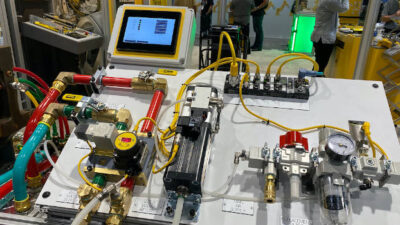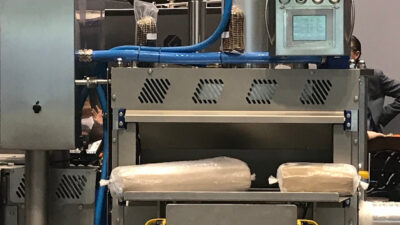Additional answers on human-machine interface (HMI) questions are offered here by a system integrator speaker in the December 2017 Control Engineering RCEP webcast: “HMI hardware and software: What you need to know.”
Human-machine interface (HMI) hardware and software was the topic of a Dec. 6, 2017, Control Engineering webcast; two expert presenters answer additional questions below. The archived version of the webcast: "HMI hardware and software: What you need to know," along with a link to a quiz for RCEP professional development hour (PDH), is available for a year after the broadcast date at www.controleng.com/webcasts.
The webcast provides advice about how to select and implement HMI hardware and software based on features for various industrial applications. Control Engineering 2017 research on HMIs also is cited.
Daniel Miller, associate controls engineer, Patti Engineering, answered the following HMI questions below.
Question: What are techniques for managing obsolescence of HMI software and hardware?
Miller: A lot of the time people have the, "If it ain’t broke, don’t fix it," mentality. This is especially true in manufacturing, and it’s not necessarily bad advice. If something works, why spend money replacing it? There comes a time when you need to make that switch because all of the vendors stopped selling those parts 5 years ago, and eBay is starting to run out of the specific models as well. I suggest to always have a backup of the code and extra hardware.
Having a backup in place with old technology is great because I’ve seen many times where things just stop working, and you don’t want to be waiting around on an eBay shipment to arrive to get a line back up and running.
When dealing with old hardware and software, I look for any documentation I can find. I make sure I research the products before and come prepared when I do interact with obsolete technology because sometimes you can’t just plug an Ethernet cord into it. Sometimes, you will need a specific way of communication, and software that is out of date. Research is key.
Q: What are some key differences in HMI hardware and software of today, compared to what’s being replaced (a decade old)? A related area: Please advise on integrating HMIs of various vintages.
Miller: Newer HMI hardware and software has better features compared to old technology. For instance, making buttons disappear is something I can’t do when working with old technology. Another example is putting pictures of the machine itself on the HMI, which is something that usually isn’t done with old hardware. As well as being more capable and easier to use, new hardware is sometimes integrated with a programmable logic controller (PLC), which makes communications between the HMI and PLC very simple.
Q: Are there recommendations to ensure compatibility of today’s hardware with future technologies?
Miller: A good rule is to make sure you get a system you can expand on. This goes for PLCs, too. If you have no more room to add another input/output (I/O) module on a PLC, you should buy another input or output card so when someone adds a sensor, you’re prepared for that change. It’s a bit hard to predict the future. Ethernet-capable devices seem to be the way of the future, but with many companies have HMIs that work only with certain PLCs, it’s hard to predict what will be in store.
Q: Please discuss initial costs, development and implementation costs, and lifecycle costs related to HMI software and hardware. Deciding what to buy has to depend on more than just initial costs.
Miller: Usually in this process, we would get a HMI and PLC that communicates well with each other that also makes sense in the environment it’s being placed in. Once we pick out the appropriate hardware we design the system itself. Paying an engineer to design the system can end up being a lot of money considering it’s something that can’t be done in one day. Implementation costs and lifecycle costs also require a lot of labor costs. I think some people see how expensive some of this technology is and don’t realize labor is even more expensive. However, inefficiently designed screens can cause years of operator grief and may lead to unintended consequences (slowdowns or shutdowns).
I know people have their preferences on what HMIs and PLCs they like, but integrating HMIs and PLCs from different vendors can take more development time. I would give the advice to make sure everything is easy to work on after it’s already running. For instance, if you need to make code changes, make sure the code is at hand. Also, if you need to make changes to the hardware, make sure it’s in an easily accessible area.
Q: Finally, do you have any parting HMI advice that you regularly give or wish people would understand beyond what was in the webcast or offered here so far?
Miller: Always use your resources. If there is something that you get stuck on, don’t be afraid to research documentation, don’t be afraid to ask colleagues, and don’t be afraid to call support centers.
Edited by Mark T. Hoske, content manager, Control Engineering, CFE Media, [email protected].
ONLINE



